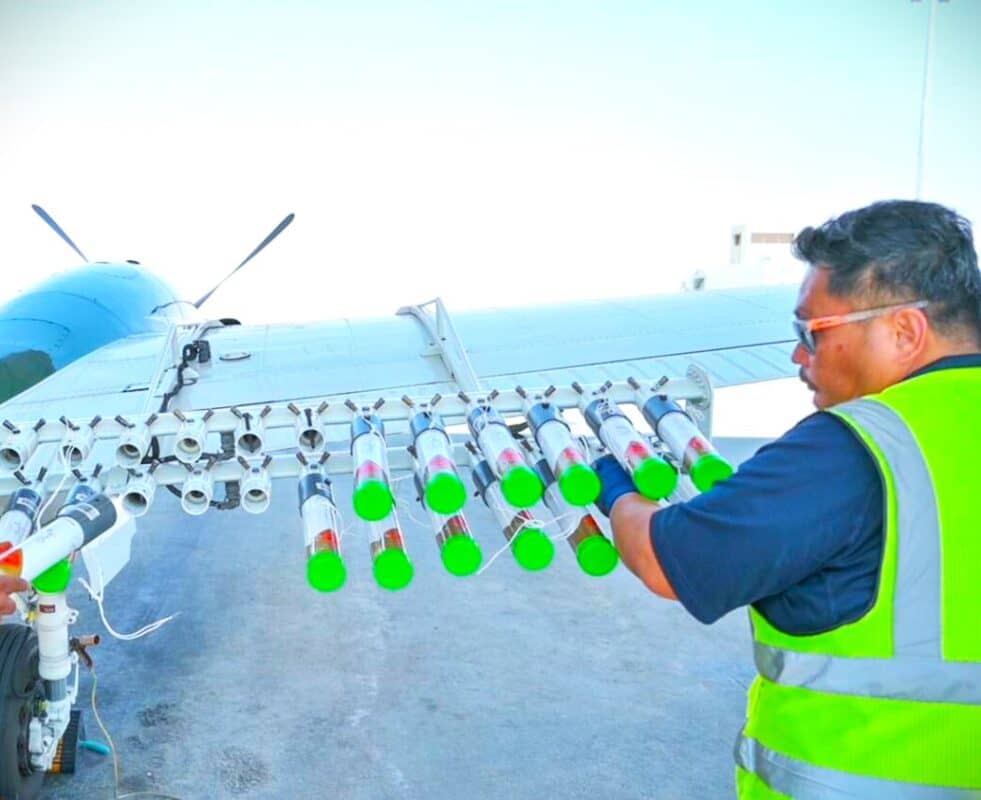COP28: UAE plans to share cloud-seeding technology with countries facing water scarcity.
This statement follows the UAE’s decision on Saturday to provide $150 million in new funds for water security measures.

The UAE is actively distributing its experience in rain-enhancement technologies to tackle global water shortage. UAE is at toplist as of its accomplishments in cloud seeding. This information was provided to reporters by Omar Al Yazeedi, Deputy Director-General of the National Centre of Meteorology (NCM). The COP28, the 28th meeting of Conference of Parties to the UN Framework Convention on Climate Change (UNFCCC) in Dubai.
This declaration follows the UAE’s vow to provide $150 million in new funding for water-safety solutions in vulnerable countries. Water is a significant topic on the UAE’s agenda at the UN Climate Summit. Wherein water specialists are actively engaging to address global warming issues.
For more than two decades, the UAE has been a pioneer in rain-enhancement research. The seeding of clouds playing a critical part in increasing country’s yearly rainfall and lowering its reliance on saltwater desalination.
Food security and rain
Al Yazeedi underlined that rain augmentation is a viable and affordable alternative for water-related issues. The main focus in on the areas like arid and semi-arid countries. Highlighting that almost half of the world population may face considerable water stress by 2030. According to Al Yazeedi, cloud seeding has the ability to increase rainfall by 15 to 25%. This will helping to replenish groundwater and augmenting freshwater supplies, aiding local agriculture and strengthening food security.

UAE is constantly upgrading cloud-seeding technology through the UAE Research Programme, which grants up to $1.5 million in successful proposal. The operation has proven the dependability of the seeding of clouds as a technique of increasing rainfall.
The selection of adequate convective thunderstorms with the ability to create rain is critical to the effectiveness of cloud sowing. The National Centre of Meteorology (NCM) uses specialized airplane to drop salt flares to increase the intensity of the downpour. The NCM extended its fleet in April of this year by adding more advanced cloud-seeding planes.
Cost-effective
The UAE completed 311 cloud-seeding operations in the preceding year, totaling nearly 1,000 flying hours. Al Yazeedi emphasized that cloud seeding is far less expensive than desalinating saltwater. The cost of creating one cubic meter of water using cloud seeding is only one fil, as opposed for desalination.
Cloud seeding, according to Al Yazeedi, is harmless for both humans and the natural world. A salt combination including the elements sodium chloride and potassium chloride is sprinkled into the centre of the cloud. To commence the process of condensation, rendering the water heavier and driving it to descening to the earth. UAE this technological advancement only use 800 grams to one kilo of salt for area encompassing about 30km by 40km. Althouhg, a cloud’s height may extend up to 18km above its base. Our goal with cloud seeding is to increase both the amount and duration of rainfall.”
System of early warning
The National Centre of Meteorology (NCM) is aggressively supporting the ‘Early Warnings for All’ campaign during COP28. This global effort focuses on catastrophe risk reduction and is led by World Meteorological Organization, and UAE presently holds leadership.
During natural catastrophes, Al Yazeedi underlined the critical significance of early warning systems in saving lives and reducing economic damages. He went on to say, “NCM will assist with addressing inadequacies in the field of observations and early notification. Especially for places and neighborhoods lacking stations for weather, detectors, or communications with satellites.”

